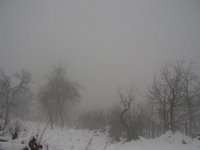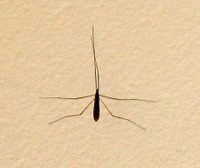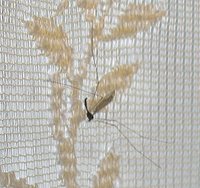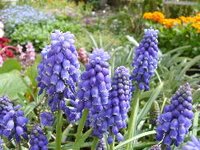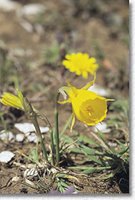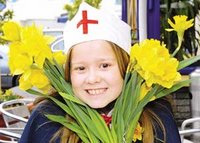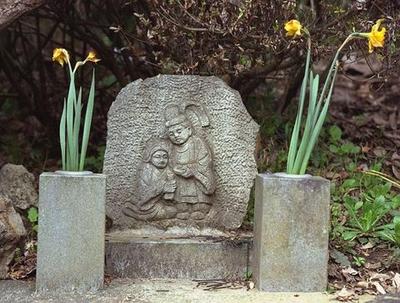:::::::::::::::::::::::::::::::::::::::::::::::::::::::::::::::::::::::::::::::::::::::::::::::::::::
Pansy, pansies
***** Location: Europa, worldwide
***** Season: Late Spring, others see below
***** Category: Plant
*****************************
Explanation
The area of origin of this well-known spring flower is Europe. Since the 19th century there have been many variations developed for gardens and parks. It is also used for bouquets.
Latin Name : Viola tricolor
Gabi Greve
:::::::::::::::::::::::::::::::::::::::::::::::::::::::::::::::::::::::::::::::::::::::::::::::::::::

http://www.mitomori.co.jp/hanazukan/hanazukan2.2.35panzie.html
:::::::::::::::::::::::::::::::::::::::::::::::::::::::::::::::::::::::::::::::::::::::::::::::::::::
The Pansy, it would seem, is one of the most alluring of all garden flowers. Its little faces make most of us laugh when we look at them. The English have given the Pansy many nicknames, such as
Call-me-to-you, Love-true, Three-faces-under-a-hood, Pink-eyed-John, Tickle-my-fancy, Bird's-eye, Jump-up-and-kiss-me, God-father, Godmother, Love-in-idleness, Kiss-me-in-the-buttery, Rob-run-the-street, and Heartsease.
With such names, it is not strange that the French call it pensee, for this word means thoughts. Yet with all the Pansies' charms, there are some persons who do not grow them.
http://www.backyardgardener.com/annual/annual59.html
*****************************
Worldwide use
Germany
Stiefmütterchen "Little Stepmother"
:::::::::::::::::::::::::::::::::::::::::::::::::::::::::::::::::::::::::::::::::::::::::::::::::::::
Japan
sumire 菫 violet
. . . . . and
"Three-colored violet", sanshoku sumire 三色菫
Viola Pansie, panjii uioora パンジー ウイオーラ
dancing butterfly-flower, yuuchooka 遊蝶花
butterfly flower kochooka 胡蝶花
Because the flowers are made up of three different colors, they have this name. Colors may vary and many artificial variations are now availabe.
Pansies have been introduced to Japan in the Edo period and are now well-loves and can be seen everywhere.
Because the flower also looks like a dancing butterfly to the Japanese eye, there is the special name.
Gabi Greve
:::::::::::::::::::::::::::::::::::::::::::::::::::::::::::::::::::::::::::::::::::::::::::::::::::::
plant kigo for all spring
sumire 菫 (すみれ) violet
tsubo sumire 壷すみれ(つぼすみれ)
hime sumire 姫すみれ(ひめすみれ)、
akane sumire 茜すみれ(あかねすみれ)
oka sumire 岡すみれ(おかすみれ)、
yama sumire 山すみれ(やますみれ)mountain violet
noji sumire 野路すみれ(のじすみれ)violet by the roadside
hina sumire 雛すみれ(ひなすみれ)
fuji sumire 藤すみれ(ふじすみれ)、
sakura sumire 桜すみれ(さくらすみれ)
kosumire 小すみれ(こすみれ)small violet
Eizan sumire 叡山すみれ(えいざんすみれ)from Mount Hiei
hana sumire 花菫(はなすみれ)
sumiregusa 菫草(すみれぐさ)
sumireno 菫野(すみれの)
sumire tsumu 菫摘む(すみれつむ)picking violets
sumootorigusa 相撲取草(すもうとりぐさ)Sumo wrestling plant
sumoogusa 相撲草(すもうぐさ)
sumoobana 相撲花(すもうばな)
hitoyogusa 一夜草(ひとよぐさ)
hitohagusa 一葉草(ひとはぐさ)
futabagusa ふたば草(ふたばぐさ)
nioi sumire 香菫 (においすみれ) fragrant violet
yamasumire 山菫(やますみれ)mountain violet
baioretto バイオレット violet
:::::::::::::::::::::::::::::::::::::::::::::::::::::::::::::::::::::::::::::::::::::::::::::::::::::
kigo for late winter
fuyu sumire 冬菫 (ふゆすみれ) violet in winter
..... fuyu no sumire 冬の菫(ふゆのすみれ)
kansumire, kan sumire 寒菫(かんすみれ) violet in the cold
*****************************
Things found on the way
. WASHOKU - Edible Plants
Viola Pansie, panjii uioora パンジー ウイオーラ
*****************************
HAIKU
in texas, we can have pansies all winter. they fade in the heat of late spring.
i have been planting white flowers for the bed visible from my own bed.
the last three nights, the plump bright moon has been overhead at night and has illumenated the white pansies, the silver dusty miller and the white cyclamen.
it has been thrilling.
white pansies
answering
the moon
susan delphine delaney
plano texas, USA
xxxxxxxxxxxxxxxxxxxxxxxxxxxxx
20.04.2001 : Aprilwetter
Die Stiefmütterchen
Strecken, einfältig wirkend,
Die Köpfe hervor.
© by Hans-Jürgen Murer, Germany
http://kurztexte.de/zKATJA/haiku/haiku04_01.htm
xxxxxxxxxxxxxxxxxxxxxxxxxxxxx
winter pansies burst
white sugar crusts upon silk
vibrant faces anew
12/12/2003
Copyright © 2006 Wendy Sparling
:::::::::::::::::::::::::::::::::::::::::::::::::::::::::::::::::::::::::::::::::::::::::::::::::::::
sumire すみれ【菫】 violet

うすくともはやいが勝と菫哉
usuku tomo hayai ga kachi to sumire kana
even the pale ones
get noticed -- violets
bloom early
Tr. Chris Drake
This spring hokku was written early in the 3rd month (April) of 1822, a few days before the birth of Issa's fourth child and third son, Konzaburo, who, like the first three children, would soon die young. Issa is 60, and his wife Kiku is 36, so Issa might be wishing he himself had learned from violets and married earlier than he did (when he was 52).
In any case, Issa praises the wise -- and canny -- violets because they somehow seem to know the importance of blooming early in spring, before the gaudy flowers and long grasses of late spring and early summer appear. Violets are known for their deep purple and other colors, but not all of them have strong colors. Even the pale ones, however, stand out in contrast to what grows around them early in spring. Issa uses an idiom in the second line that is usually translated "First come, first served," although the idiom is also similar to "The early bird catches the worm."
The to after the idiom, at the end of the second line, indicates the manner in which the violets grow -- but it can also indicate the manner in which the violets feel and think, so Issa seems to be attributing a certain level of awareness to the flowers. It's possible that Issa may be showing his affection for the violets by kidding them, suggesting jokingly that their early blooming shows they have a streak of vanity.
Chris Drake
世にそまばこくも薄くも菫哉
yo ni somaba koku mo usuku mo sumire kana
tinged with the world
deeper or lighter
ah, violets
This hokku is from the sixth month of 1824, a month after Issa, his first family completely gone, got married for the second time to Yuki, the daughter of a samurai on 5/12. The two were not well matched, and Yuki soon went home on 5/24. She returned to Issa's house on 5/29 but again went back to her parents' house on 7/12 then again on 7/27. Finally Issa signed the divorce document she wanted on 8/3. Is this hokku an oblique comment by Issa on his marriage? The hokku suggests that while most violets are purple, if they are moved here and there, the precise shades of a violet's color is affected by the environment and nearby colors. Their placement and contexts determine their exact shades. Issa seems to be speaking indirectly here about humans as well, about how people are influenced in various ways by the people they live with and meet.
People change in different surroundings and situations and among different people. Is Issa also obliquely suggesting that the shades of his own emotions have been influenced differently by his two different wives? And that perhaps Yuki's reaction to him is likewise influenced by shades of feeling she wasn't aware of when she was with her family? If so, he may be suggesting that the differences they are discovering between them, some quite deep, are natural and unavoidable.
Tr. and comment : Chris Drake
.................................................................................
菫程な小さき人に 生れたし
sumire hodo chiisaki hito ni umaretashi
love to
live as small
as a violet
Natsume Soseki
- Shared by Hideo Suzuki
Joys of Japan, March 2012
. Natsume Soseki 夏目漱石 .
*****************************
Related words
***** Pinguicula macroceras 虫取菫 mushitori sumire
"insect catching pansy"
Pinguicula vulgaris
. . . CLICK here for Photos !
:::::::::::::::::::::::::::::::::::::::::::::::::::::::::::::::::::::::::::::::::::::::::::::::::::::
***** . PLANTS in all seasons - SAIJIKI
[ . BACK to WORLDKIGO . TOP . ]
:::::::::::::::::::::::::::::::::::::::::::::::::::::::::::::::::::::::::::::::::::::::::::::::::::::




